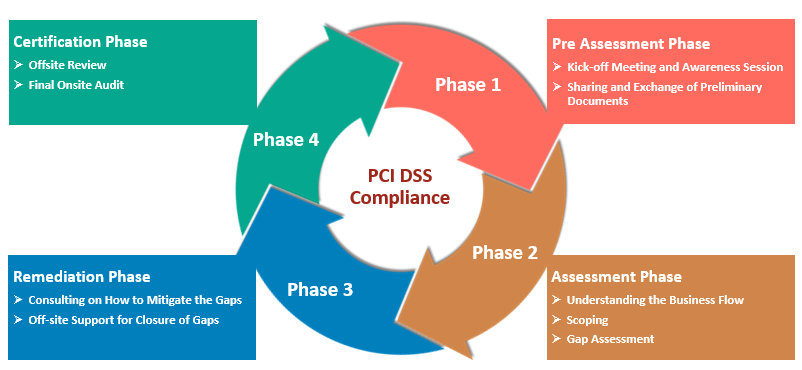Importance of PCI DSS Compliance requirements

PCI DSS Compliance requirements
The standards for the online payment transaction are set by the Payment Card Industry Data Security Standard (PCI DSS) for crucial data protection. The organization needs to fulfil these requirements to get PCI DSS compliance. 12 PCI DSS Compliance requirements are classified into six different categories. Fulfilling these requirements makes the organization eligible for the PCI DSS compliance certification. Having this compliance ensures the customers that their data is safe while dealing with this organization. Compliance reduces the chances of fraud and breaches.
The Testing Procedure for PCI DSS Compliance Requirements:
For building and maintaining a secured network and system, each of the 12 PCI DSS compliance requirements has different testing procedures mentioned by the PCI DSS.
These testing procedures include:
Requirement 1: Inspection of firewall and router configuration, examination of documented procedures for testing and approval of network connections, rules sets to be reviewed every six months, restriction of connections between untrusted networks, permitting only authorized traffic to access the cardholder data environment.
Requirement 2: Change the default vendor-supplied passwords and account for including operation systems, application, security software, etc. All unnecessary default accounts are disabled, enable the necessary services, protocols that are required for the functioning of the system.
Requirement 3: Limiting the storage of crucial data, specifying the reason and time for retention of cardholder data, deleting the stored cardholder data exceeding the predefined retention time, maintain a log for all details.
Requirement 4: Identification of the location of cardholder data transmitted or received on the public or open network. Using strong cryptography for different locations, acceptance of trusted keys and certificates.
Requirement 5: Deletion of all known malicious software, protection against all known malicious software.
Requirement 6: Identifying the new vulnerabilities, classifying these risks, installing applicable critical security patches immediately after their release, check for PCI DSS compliance of application, functional testing after major changes.
Requirement 7: Assigning access to the individuals based on their job classification and function and restricting access to least privileged members, maintaining a log to check assess to the data.
Requirement 8: provide unique ID and password and preferably a unique system to each handling the cardholder data, removal or deletion of inactive accounts from the access list, providing timed access.
Requirement 9: Maintain physical security of data room, computer center, and other systems having cardholder data environment, placement of video cameras at the sensitive areas.
Requirement 10: Audit trails in the logbook, verify changes, additions, and deletion made to any account using administrative login, retain audit trail history for around 12 months, documentation of all data.
Requirement 11: Identify the authorized as well as unauthorized wireless access points every 3 months, check documents for internal and external vulnerability scans, review the high-risk vulnerabilities and check if timely resolved.
Requirement 12: Policy to be reviewed annually, identification of critical assets, vulnerabilities, and threats, verify the usage policy for technology, network locations, and products.
Getting the PCI DSS compliance is important for all small and big organizations. They have to fulfil all the 12 PCI DSS compliance requirements and for that, they need to perform the above-mentioned testing procedures for each of the requirements.